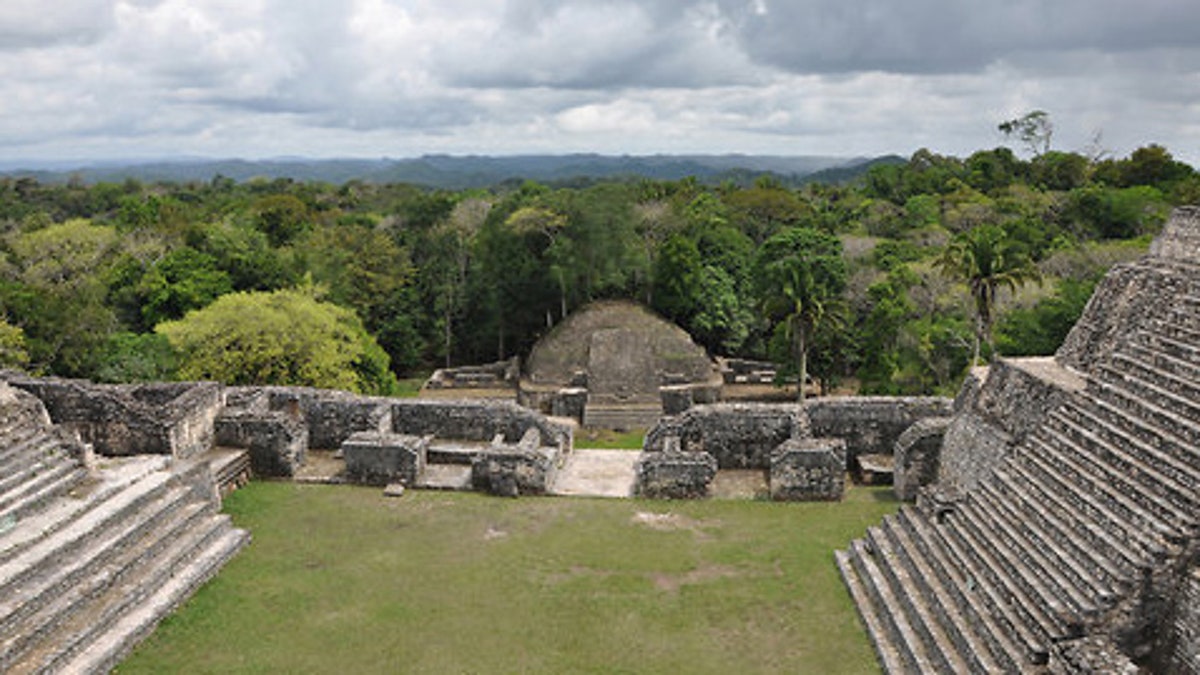
Researchers study stalagmites, revealing how climate change impacted ancient Maya civilization. (This photograph is protected by United States copyright law and may not be reproduced, distributed, transmitted, displayed, published or broadcast without the prior written permission of the copyright owner. Licensing requests should be sent to photosales@nytimes.com.)
The ancient Mayans may have something new to teach us, and it's not a date for Doomsday.
A recent study of 2,000 stalagmites from a cave in Belize reveals that climate change had long-term impacts on the growth and demise of the Classic Maya civilization. Douglas J. Kennett, a geoarchaeologist from Penn State University, as well as a team of colleagues studied the stalagmites from Yok Balum cave, leading to a discovery of detailed historical records of the Maya culture, including political systems and advanced technology inscribed on stone monuments. Calendar dates show wars, marriages, as well as accessions of kings and queens, matching specific dates in the Christian calendar.
The team also analyzed how climate changed played a key role in the Classic Maya developing a growing kingdom.
“In the study we developed a high resolution climate record,” says Kennett. “We developed two measurements, whether it was wet or dry, per year for the last 2,000 years. We can go back and learn what was going in AD 110 in terms of climate. And within the record, it shows that the conditions were very wet, favorable for various kinds of agriculture that was being practiced by them at that time, and really the expansion of population and the integration of these people into larger cities, like northern Guatemala. There were 60-70,000 people living at that location during the classic period.”
Once the climate became dryer, Kennett notes, the Maya cities reduced, potentially leading to its downfall.
“What we see in the historical record is increased warfare between these major cities, which seems to be one of the major social responses to the drying climate,” explains Kennett. “We made the argument that it’s related to decreased agriculture productivity, potentially stimulating social and political instability. Even as early as the 7th century you see some of these cities start to disintegrate. The kings in control lost their influence and power. And many of them failed between AD 800 and 900. That’s when conditions were continuing to dry through that period.”
The team stresses that despite the surprising connection between climate and the Classical Maya, it’s only one part of the story. The researchers plan on using the data to further study the relationship between environmental and societal change. With the climate changes we’re experiencing today, anthropologists are interested in further understanding how weather can possibly alter an entire society. The collapse of the ancient Maya continues to be a mystery among scholars, but these new findings may provide more clues on why it occurred.
And as for the end of the world supposedly on Dec. 21? Kennett states there is no specific connection found within the stalagmites being studied.
“In terms of the linkage between the Maya calendar and the business about the end of the world in December," Kennett said. "The only connection to that is the Maya calendar played an important role in looking at the relationship between climate change and cultural change.”
